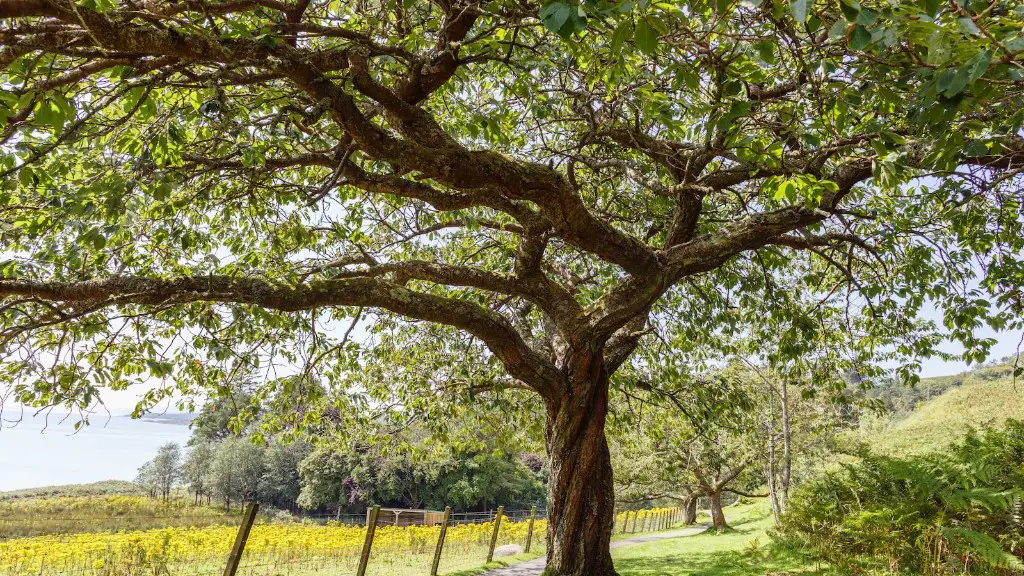Background & Introduction
Palm trees are most often associated with tropical climates, but they grow in many other areas of the world. Transplanting a large palm tree can be a daunting and potentially dangerous task, but with the right know-how, it is possible. Transplanting a palm tree does not have to be an overwhelming task as long as the proper techniques are followed. Knowing the right steps can also save time, money and a damaged or dead tree. Therefore, it is essential to understand the basics before attempting to transplant a large palm tree, as it will require significant effort, dedication and patience.
Digging & Removing the Palm Tree from Its Original Location
The initial step when transplanting a large palm tree is to dig out an adequate hole in which to move the tree. This is an important step as the size of the hole will largely determine the success of the transplant. Generally, the hole should be two to three times larger than the root-ball of the tree. For example, dig a hole that is 4 to 6 feet wide if the root-ball of the tree is 2 to 3 feet in diameter. Additionally, to prepare the hole, remove any large rocks and roots and break down any soil clumps so that the hole is smooth and even.
After the hole is prepared, cautiously dig around the base of the tree so that the roots are partially exposed. It is a good idea to create a sloping cut around the tree, as this will make it easier to slide the tree out of its existing location. Additionally, use a shovel or other digging device to loosen any dirt clinging to the roots and gently brush away any dirt attached to the trunk of the tree.
Preparing the Palm Tree for Transplanting
To further prepare the tree for its new location, begin trimming back any long or weak branches. This will reduce the amount of foliage, making the tree easier to move and also enabling it to establish in its new home as soon as possible. Also, wrap burlap around the trunk of the tree to keep dirt and debris away while it is being transplanted.
Lifting & Re-planting the Palm Tree Into the New Location
Once the hole is prepared and the tree is ready to move, use a lifting tool to carefully stand the tree up. It can be useful to use a tarp or sheet to help get the tree in the right place, ensuring it is centred in the hole. Additionally, to make sure the tree is securely in its new home, use a stake or trellis to make sure it does not move.
When finished, begin refilling the hole with soil, making sure to pack it securely around the trunk and base of the tree. As you fill in the hole, it is a good idea to add fertiliser to help foster growth and also sprinkle some water at the base of the tree. Once complete, you should have a well-placed palm tree in its new home.
Caring for the Transplanted Palm Tree
Once the palm tree is in its new location, it is important to offer extra care to the tree. This includes providing regular waterings that are deep and slow to ensure deep root growth. Additionally, to ensure the tree is properly nourished, use organic fertiliser or compost when necessary. Additionally, it is important to keep an eye out for any pests, especially during the warmer months as many bugs and diseases flourish in these conditions. As long as you offer regular and proper care to the palm tree, it should be well on its way to becoming a successful part of its new environment.
Pruning & Maintenance
Transplanted palm trees should also be pruned regularly to encourage healthy growth. To do this, cut off any dead branches or suckers sprouting off of the base of the trunk of the tree. Additionally, it is a good idea to prune back any long or untidy branches. Not only will this help the tree to look its best, but it will also help promote more efficient growth.
Fallen Frond Removal
Fallen fronds, or dried leaves and branches, should also be removed regularly to both improve the health and appearance of the palm tree. To remove fallen fronds, use a sturdy ladder to get to the higher areas of the tree and then use a pair of gardening shears to cut it off. Plus, never forget to wear protective eyewear and gloves.
Protecting the Palm Tree for the Winter
Finally, when it comes to transplanting a large palm tree, preparation for winter weather is essential. This includes using a tarp to protect the trunk of the tree from the cold temperatures and wind. Additionally, extra mulch throughout the winter months can help insulate the tree against the cold weather. This will minimise the risk to the tree, while also helping promote new growth when the warmer weather returns.
Conclusion
Transplanting a large palm tree is no small undertaking and takes effort, dedication and patience. However, if the right steps are followed, it can be done without harm to an existing or transplanted tree. It is important to remember to take time to plan, prepare and act with caution throughout the process in order to get the most out of your experience.


